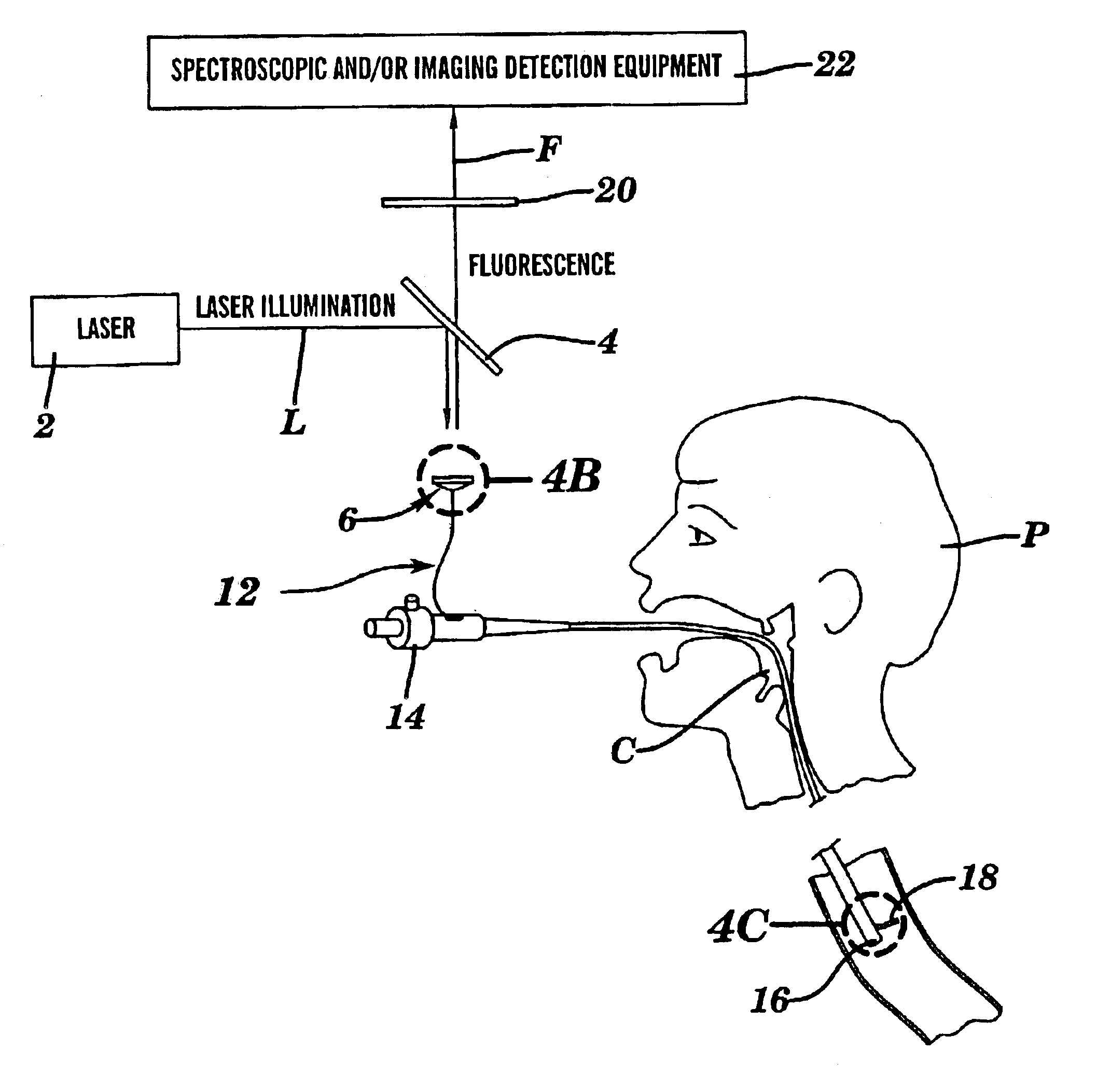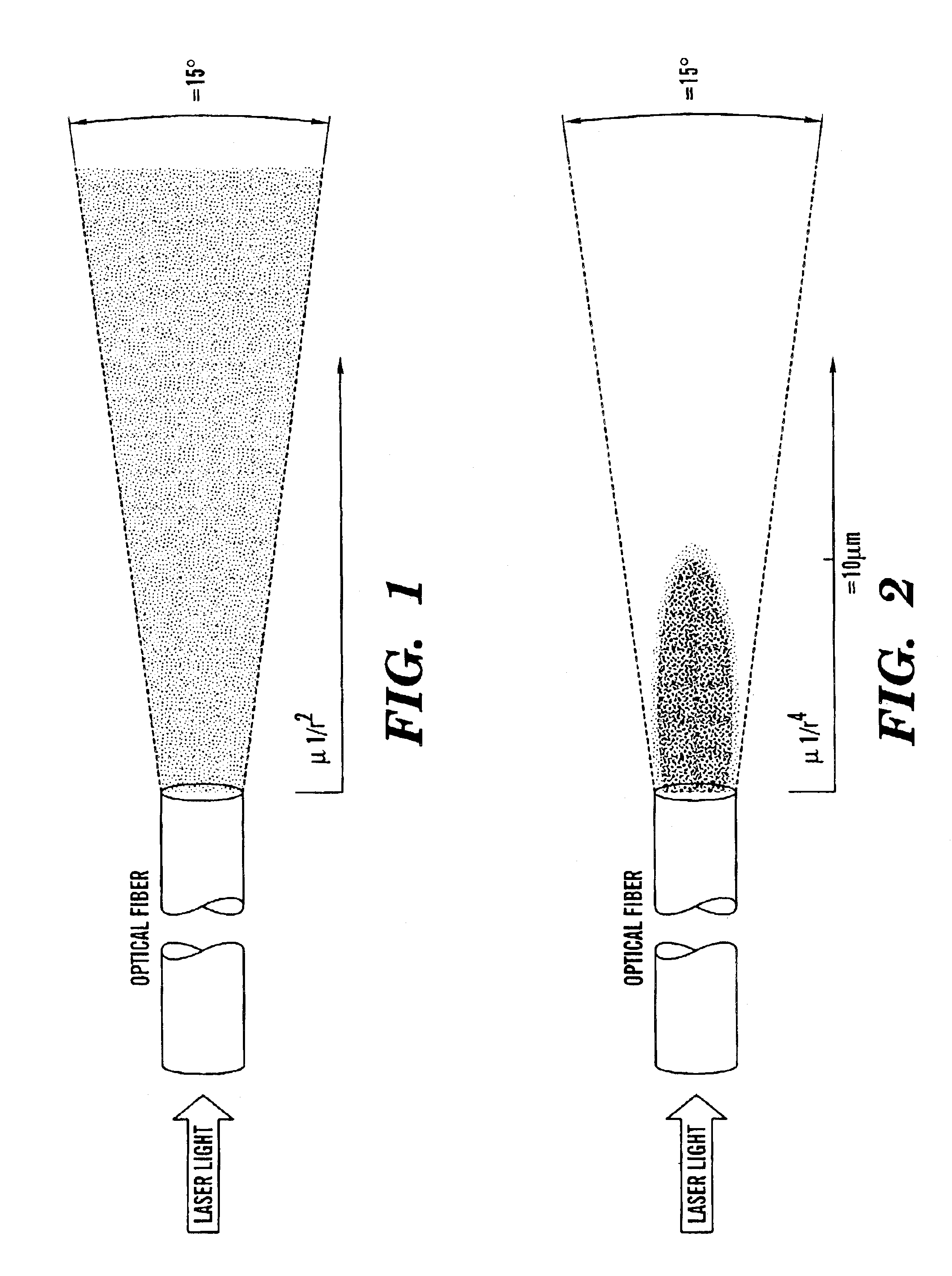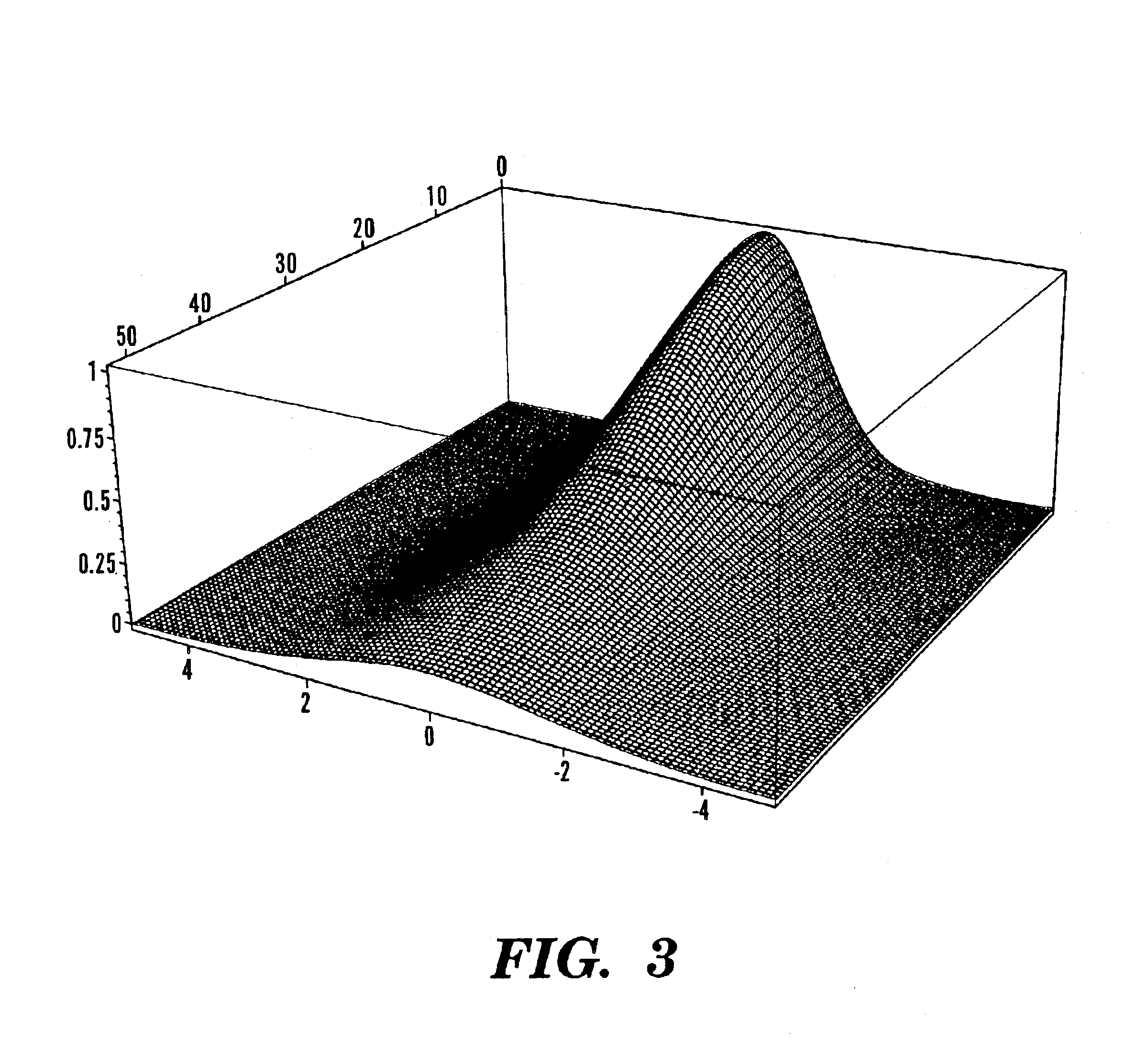Use of multiphoton excitation through optical fibers for fluorescence spectroscopy in conjunction with optical biopsy needles and endoscopes
a multi-photon excitation, optical fiber technology, applied in the direction of fluorescence/phosphorescence, spectroscopy, instruments, etc., can solve the problems of insufficient volume observed, insufficient angular spreading, and insufficient spatial resolution, etc., to achieve sufficient spatial resolution, convenient resolution, and use the effect of spatial resolution
- Summary
- Abstract
- Description
- Claims
- Application Information
AI Technical Summary
Benefits of technology
Problems solved by technology
Method used
Image
Examples
Embodiment Construction
One aspect of the present invention relates to a method of detecting disease within a particular tissue of a plant or animal. This method involves activating the particular plant or animal tissue by application of radiation through at least one optical fiber under conditions effective to promote a simultaneous multiphoton excitation of the particular plant or animal tissue and to emit an intrinsic fluorescence characteristic. The intrinsic fluorescence characteristic is compared to fluorescence emitted by exciting healthy tissue of the particular plant or animal under the same conditions used to carry out the activating step. The particular tissue of a plant or animal where the intrinsic fluorescence characteristic differs from the fluorescence, emitted by exciting healthy tissue of the particular plant or animal under the same conditions used to carry out such activity, is then identified as potentially diseased.
Another aspect of the present invention involves a method of producing...
PUM
 Login to View More
Login to View More Abstract
Description
Claims
Application Information
 Login to View More
Login to View More - R&D
- Intellectual Property
- Life Sciences
- Materials
- Tech Scout
- Unparalleled Data Quality
- Higher Quality Content
- 60% Fewer Hallucinations
Browse by: Latest US Patents, China's latest patents, Technical Efficacy Thesaurus, Application Domain, Technology Topic, Popular Technical Reports.
© 2025 PatSnap. All rights reserved.Legal|Privacy policy|Modern Slavery Act Transparency Statement|Sitemap|About US| Contact US: help@patsnap.com



